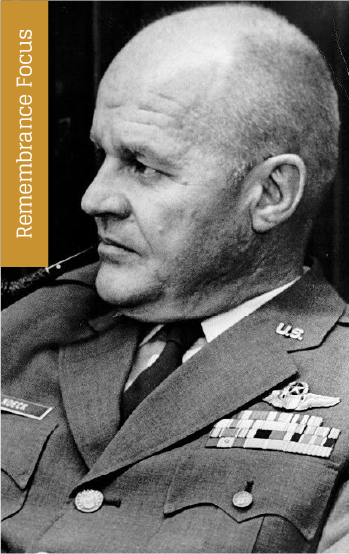Col. A. K.

Born: January 31, 1921, Vienna, Austria
Died: September 28, 1992
Education: Bachelor Of Science, Arizona State University, 1976
Military: Colonel, United States Air Force, retired April 1971: Instructor pilot, fighter pilot, transport pilot, photo reconnaissance pilot, Flight Commander, Director of Operations, Plans Officer, Wing Commander
Rating: Command Pilot, Instructor Pilot
Aircraft flown: P-38, P-47, P-61, T-37, T-38, F-5, C-47, C-54
Helicopters flown: UH-1, HH-43, CH-3C
Awards: Legion of Merit, Joint Services Commendation Medal, Air Medal, and the Air Force Commendation Medal
Wife: Evelyn Koeck, née Aker
Children: Joanne Giffard, Nelson Koeck, and Evan Koeck
Religion: Roman Catholic
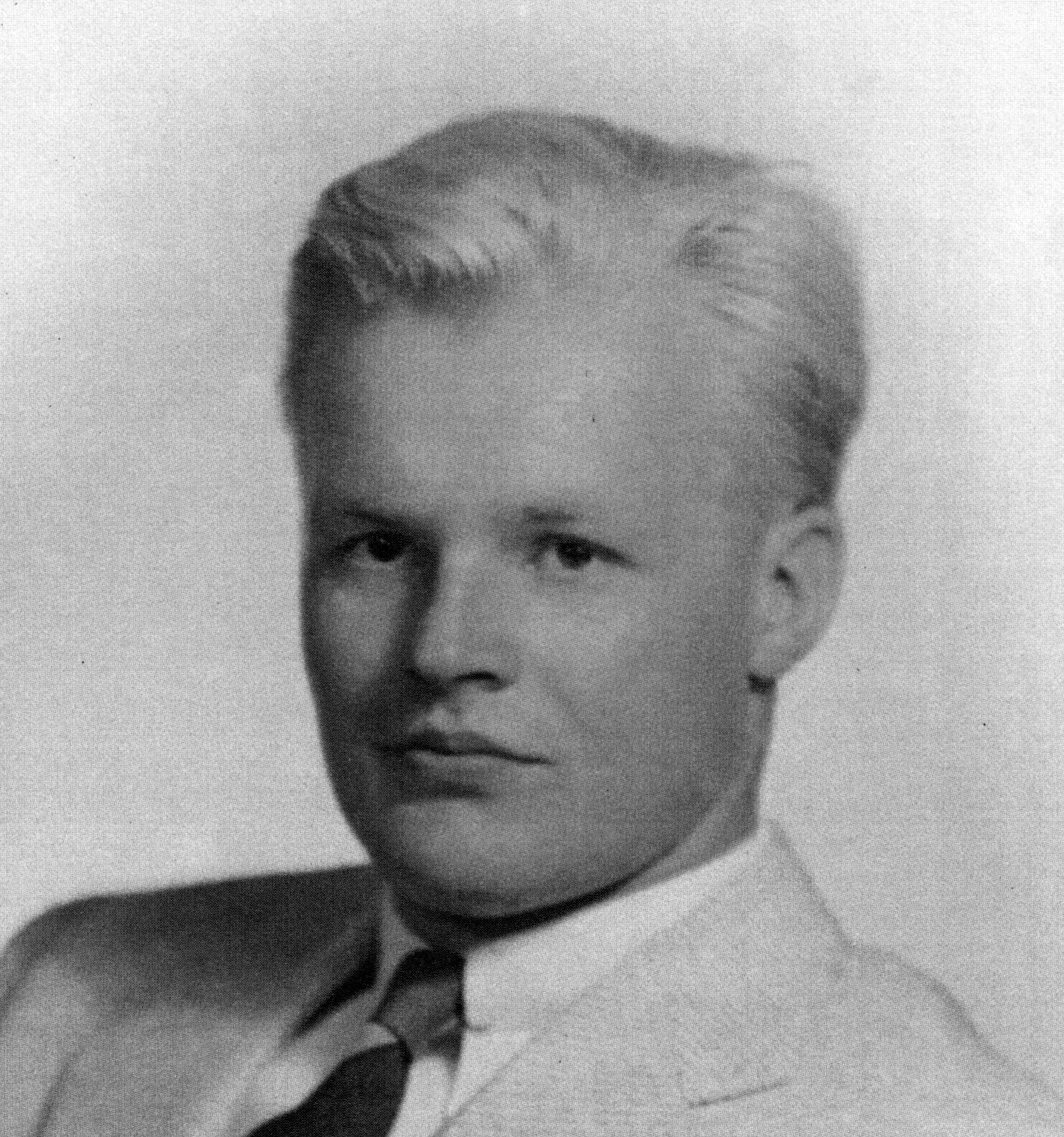
Closing
{ Part 1 }
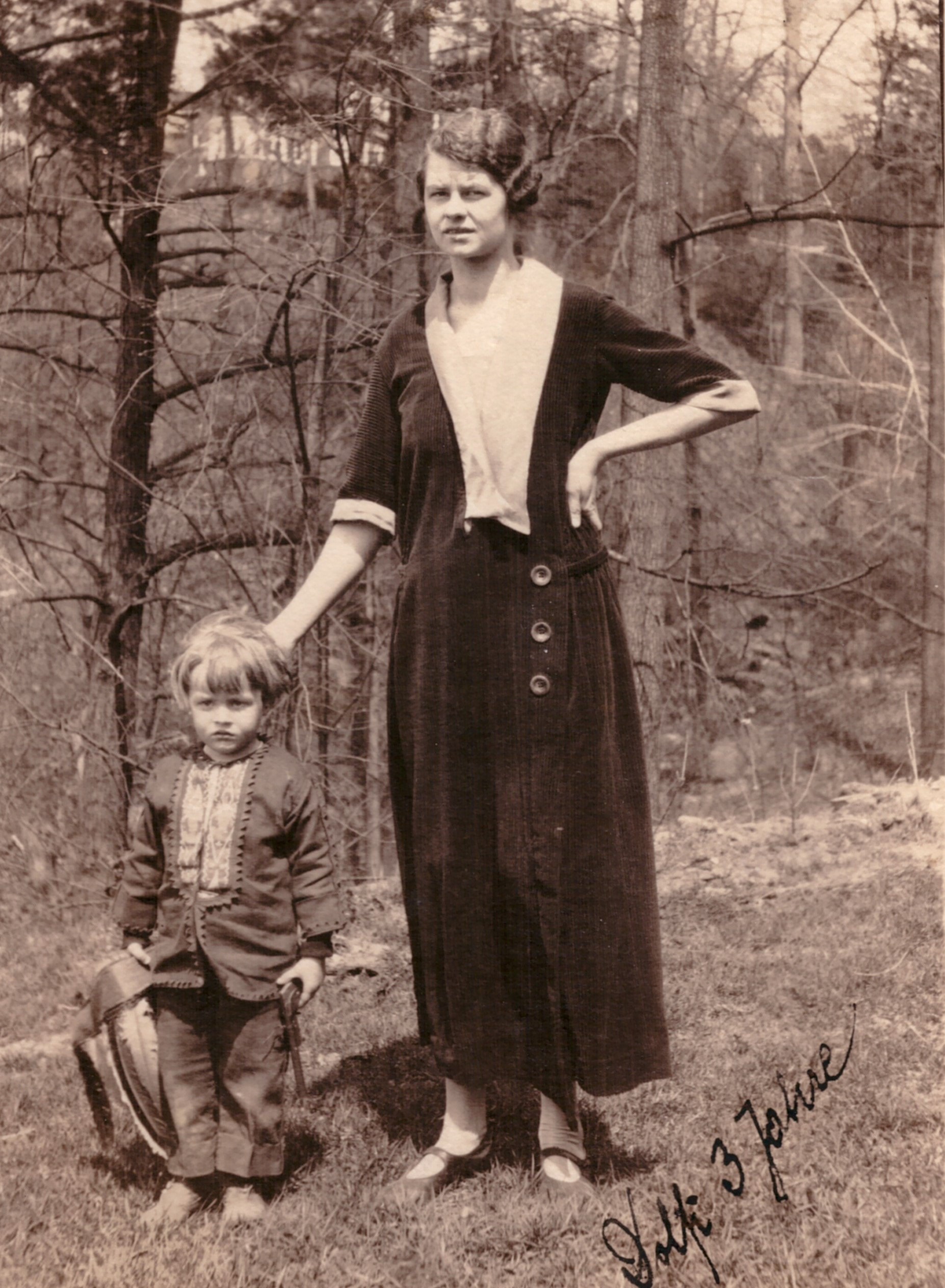
When A. K. Koeck retired from active duty in the United States Air Force after 30 years of distinguished service, the life that began for him exactly a half century before in post-WWI Europe had come to embody the American Dream. Born Adolph Karl Koeck on January 31, 1921, in Vienna, Austria, young “Duffy” early on developed the qualities that would define both his personal and professional life: faithfulness to family, loyalty to mission, and a relentless intelligence framed by an adventurous spirit.
In 1924, just as he was beginning his most formative years, the three year old Duffy and his parents, Josef Anton and Mary Rosalind Koeck (née Meischl), departed Austria aboard a ship bound for the United States, part of the great European migration searching for a more secure future in America. The Koecks settled in Yonkers, New York, where Josef became a successful jeweler, and Mary worked part-time as a seamstress. Duffy happily adjusted to his new life, learning English so quickly, that he played veteran language instructor for his parents. In what was to form the key intellectual foundation for his professional career as an Air Force pilot, Duffy began to show a passion for science while a student at Gorton High School. Duffy’s intellectual curiosity and his youthful wicked sense of humor proved a potent mix as he experimented more than once with explosives that ended up derailing a Bronx trolley car.
Duffy’s adventurous spirit and passion for piloting vehicles eventually evolved from the driver’s seat of a Yonker’s laundry truck to an airplane cockpit. That spirit and passion, however, was soon put to greater use when the United States entered the war following the Japanese air assault on Pearl Harbor on December 7, 1941.
{ Part 2 }
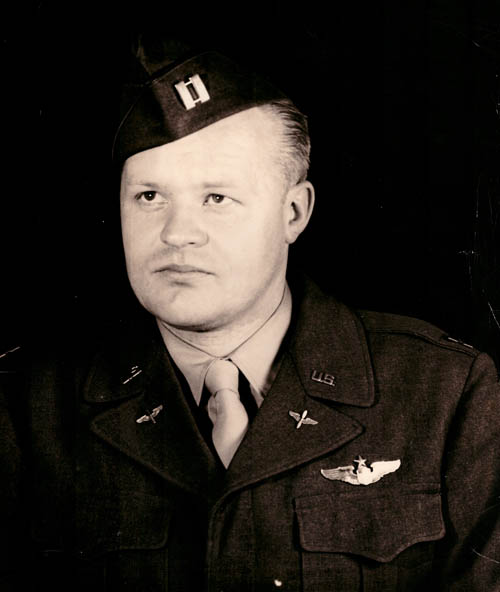
Captain Koeck tasked to fly the Berlin Airlift

Sensing impending war and heeding his patriot’s call to mission, the twenty year old Duffy enlisted in the Army Air Corps in August 1941, as he started his military career as an aviation cadet at Turner Field, Georgia. Within a year, Duffy had earned both his pilot’s wings and a lieutenant’s commission.
After completing a brief one-week course designed for flight instructors, Lieutenant Koeck, who had married his high school sweetheart at the start of his training, began enjoying life on base with his bride, the former Evelyn Aker, and started the important task of training future pilots for the war effort. One of the most difficult aspects of being an instructor pilot in the Air Corps was the anguish of losing pilots in training, sometimes the result of ill-conceived aerobatics shown off in front of family and friends who came to visit the base.
One humorous aspect of flying, although not so for student navigators, found Duffy and other pilots bouncing their aircrafts’ wheels off the top of AT-11s on final approach after navigation missions. Lieutenant Koeck himself was involved in more than one hazardous flight, most memorably having his Stearman’s engine shut down in flight.
After he had left the cockpit and climbed onto the wing to parachute from the stricken craft, the engine unexpectedly restarted on its own. That joy of being able to fly the Stearman back to base outweighed previous sorrows suffered by the young officer.
He recalled the camaraderie he shared with his fellow instructors, as they logged their mandatory cross-county hours by traveling en mass and landing in a farmer’s field. The rest of the afternoon was spent feasting on watermelon before returning in the darkness to Turner Field. The sorrow came from vivid memories of the instructor who told everyone to watch his aerobatic maneuvers only to kill himself misjudging a low level barrel roll.

{ Part 3 }
A Return to Austria
In a very real way, Lieutenant Koeck’s transfer to Linz, Austria, assigned to serve as Provost Marshall in the aftermath of the Allied victory over the Nazis, was a return to his beginnings. During this time, Duffy was also flying the P-47 fighter aircraft with a unit tasked with enforcing the surrender of the Axis troops. It was in Linz where Evelyn gave birth to their first child, a daughter, Joanne, which was a sacred circling back to his original homeland. (A son, Nelson, was born in Ohio in 1950, and in 1957, another son, Evan, was born in Japan.)
Duffy Koeck had come a long way, and by 1949, a promotion to Captain in the newly-formed United States Air Force, found this ambitious airman flying transport aircraft as part of the famous Berlin Airlift, in support of West Berlin and its beleaguered citizens. In 1948, in a move which announced the start of the Cold War, the Soviets blockaded Berlin, keeping all rail, canal, and road traffic from reaching the western part of the divided city. In response, the American, British, Canadian, and other western Allies started flying food and fuel into the German city.
The blockade was broken in April 1949, when the Allies were able to deliver more supplies by air than had been transported by rail in early 1948. It was the perseverance of the western Allies and the dedication and skills of the aircrew members, such as Duffy Koeck, which finally broke the Soviet’s grip on the city. In recognition for “meritorious achievement while participating in aerial flight,” during that time of confrontation with the Soviets, Duffy was awarded the Air Medal for flying 100 missions into Berlin.

{ Part 4 }
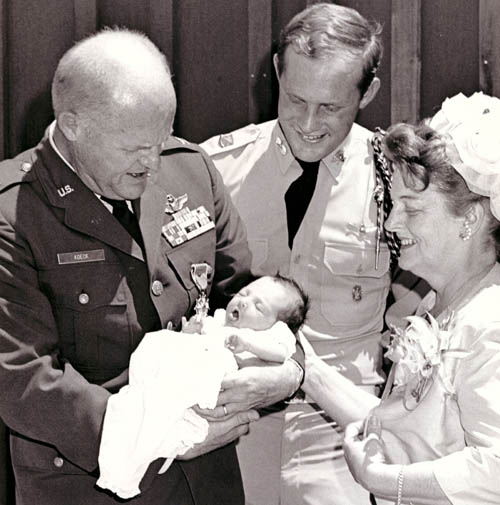
The Wing Commander became a proud and happy grandfather
An assignment to Wright-Patterson Air Force Base in Ohio followed Duffy’s European tour of duty. An assignment to the other side of the world found Duffy now posted to Japan. During this period, Captain Koeck, who purchased an Austin-Healey in Japan, also pursued what would become a lifelong passion for sports cars and racing. Later on, he would also own and race a Jaguar XKE, and in retirement spend countless hours restoring his beloved 1966 Ferrari 330 GT 2+2.
It came as little surprise to those who worked with Duffy that one promotion should follow another in quick succession. After a four year assignment to the Pentagon, he was promoted to Colonel and posted to Hickam Air Force Base, Hawaii, where his significant contributions to the Seventh Air Force in the Office of Planning were nicely complimented by his new-found love of surfing.
As Director of Operations Services for Air Training Command at Randolph Air Force Base in San Antonio, Texas, and later Wing Commander of the joint U.S./German pilot training and helicopter school in Wichita Falls, Texas, Colonel Koeck showed a remarkable ability to command the respect, loyalty, and affection of his subordinates. They were in awe of his racing skills, which he displayed on the runway whenever flying was suspended.
In December 1969, Colonel Koeck was posted to Williams Air Force Base, Arizona, and given the unenviable task of relieving the Wing Commander, who had been implicated in a “wife-swapping” scandal that threatened to tarnish the image of the Air Force and undermine morale at the base. During his time at Williams as Wing Commander, Colonel Koeck flew the T-38’s and successfully directed the pilot training wing. The scandal receded, morale was established, and though it was Colonel Koeck’s final assignment before his retirement in 1971, it was hardly the last of his adventures.
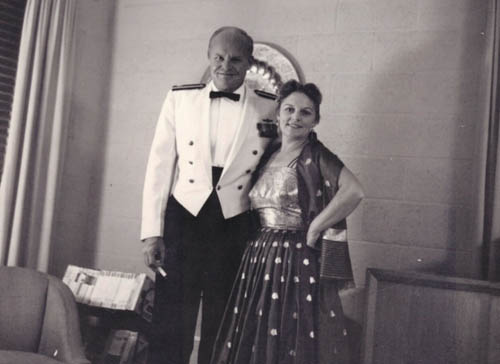
{ Part 5 }
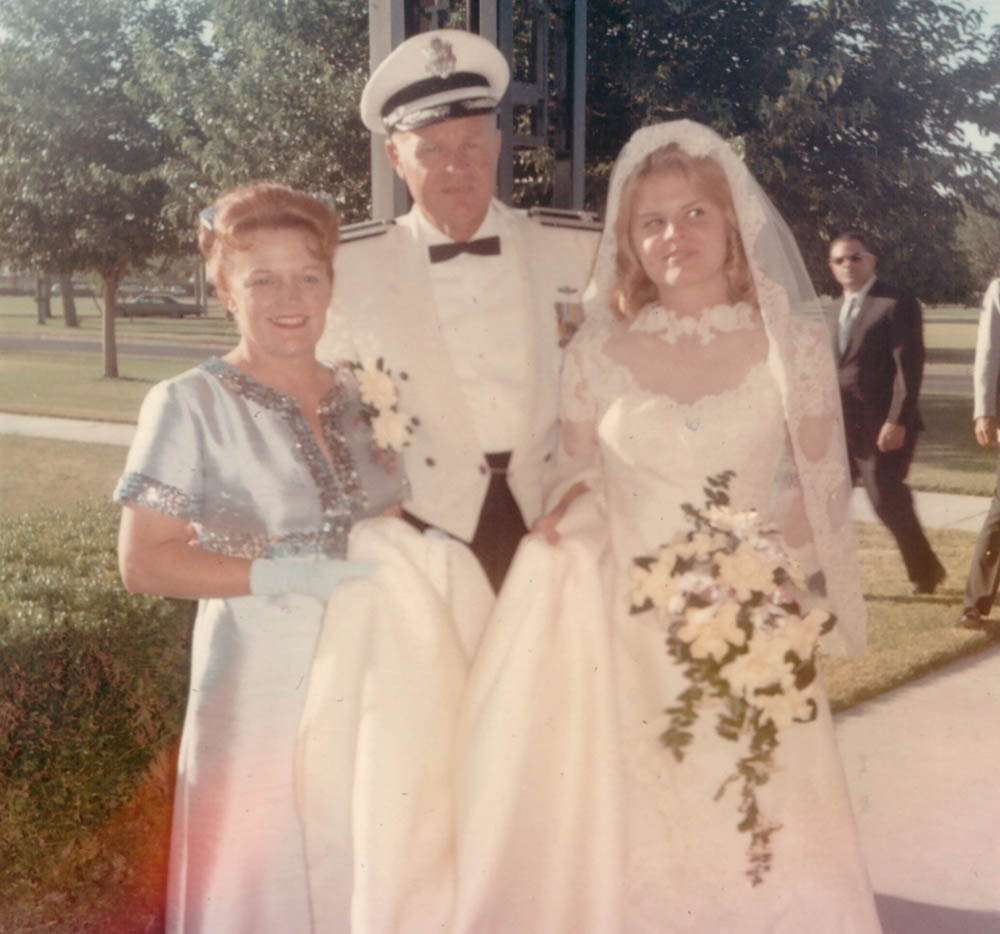
The proud father escorting Joanne on her wedding day
Colonel Koeck, later retired and while living with his family in Tempe, Arizona, finally had the opportunity to fulfill his diverse passions: going on hunting trips with his children and grandchildren, studying multiple languages, and preparing gourmet meals for family and friends at home. He continued to nurture his love of aviation by attaining a Bachelor of Science in aeronautics from Arizona State University in 1976, and exercising his considerable writing skills in book reviews published periodically in the local newspapers. Evelyn and he celebrated over forty-five years of marriage, and their affection for one another only grew stronger in retirement.
The Latin motto, “Anuit Coeptis,” engraved on the United States Legion of Merit, which Duffy had been awarded for meritorious service, reads like a prayerful petition: “He [God] Has Favored Our Undertaking.” Duffy Koeck’s dedication to professional duty and devotion to personal responsibility, as well as his exemplary faith in a Providence that guided a three year old immigrant child across the wide Atlantic with his parents to the shore of the American Dream, became the airman’s joyful response to God’s beaming smile. He never wavered in his belief that what was freely given should be freely shared. When he was laid to rest with full military honors in Arlington National Cemetery in October 1992, comforted in his eternal peace by the blessing of family and friends alike, Providence had once again come full circle.
Credits:
Author: Kevin Hancock
Photos:
Intro: Duffy at age 20
Contents: Duffy with family in Japan
Part 1: Four year old Duffy
Part 2: Duffy in his Austin-Healey in Japan
Part 4: Taking command at Sheppard AFB
Part 5: Duffy and Evelyn in Arizona
I had the privilege of being Duffy’s son-in-law and fellow Air Force officer. All those officers that I met, who had once served under him, spoke highly of him as they praised his leadership and fairness as a commander.
He was “Old Air Force” and a pilot, always giving an admiring glance to a beautiful woman. The Colonel was also the Wing Commander of a pilot training school in a branch of service where pilots were kings. In deference to my finding out that I would not be able to go to pilot training, and thus had to become a navigator because of bad eyesight, he told me that from that day he would quit calling navigators “sandbags.”
He also let me know the real status of things in the military when I told him about several lieutenants talking about who out-ranked whom. Duffy’s retort was, “Rank among lieutenants is like honor among whores. . . there is none.” However, as a career military officer he also valued service to our country. When I returned on leave from flying combat missions in Vietnam, the Colonel graciously insisted that my wife Joanne and I use his master bedroom with its satin sheets as a partial reward for my combat service.
Joanne was a “Daddy’s girl” and Duffy was always fast to praise her for her accomplishments. Although she had enough credits to graduate, he paid her tuition so she could stay an additional semester at her private college in Denver, Colorado. That way she could graduate the same month as I did from the Air Force Academy.
It was April 1, on my third birthday, when much to my mother’s dismay, Dad escorted me to view King Kong, while Mom was still recuperating in the hospital after the birth of my brother Nelson. Throughout my life, Dad was always my escort through one adventure after another.
Later, at the age of six, as we disembarked from a military ocean liner on the coast of Japan, there was Dad, laden with gifts for each of us. In no time at all, we were cruising through the streets of Tokyo passing rickshaws and honey buckets on the way to Grand Heights. Without fail, we never missed weekend trips in Japan. Our excursions included fishing for our dinner at a hotel pond near Mount Fuji one delightful Easter weekend. That weekend we bathed as a family in the hot tubs, and slept on tatami mats, only to be surprised with Easter baskets the next morning. New Year’s in Japan meant greeting the Emperor as magnificent dragons paraded through the streets.
After three short years, we flew across the Pacific and on to Washington D.C. During this flight, Dad was called on to fly the plane, and I still remember how smooth that portion of the flight was. Again, when Dad was not diligently working at the Pentagon, we were touring historic Virginia and beyond. There was Jamestown, Williamsburg, and Monticello. Every weekend Dad escorted us to period hotels and restaurants. The Waterfront Symphony was a summertime favorite in the evenings, which was always preceded by a jaunt to a museum.
In another four years, Dad was transferred to Hawaii to join CINCPAC. The road trip across the United States was a dream, and I was elated most of the time. You see, this new move ruined my chances of joining the Washington School of Ballet. Well, one week after our arrival by plane in Honolulu, Dad had magically enrolled me in a summer dance session, and in no time at all, I was dancing in West Side Story. And where was Dad every weekend evening around 6:30 p.m.? Everyone knew that Dad would be religiously parked outside Reiko Oda’s Dance Studio waiting for me. I’d step into his Jaguar for my daily driving lesson, as I stripped the gears all the way back to Hickam Air Force Base from the University of Hawaii. In Hawaii, when we were not surfing on the weekends, we were in helicopters circling Mt. Kilauea, or traveling to remote Hawaiian Islands.
As college approached, the sky was the limit for me. Not knowing the whereabouts of Dad’s next tour of duty, I chose beautiful mountainous Colorado where I would attend college. Dad rotated from Hawaii to Randolph Air Force Base in Texas, to Sheppard Air Force Base in Texas, and then to Williams Air Force Base in Arizona during my college years. Often, Dad would fly a military jet to see me in Denver.
Joanne Koeck Giffard – Daughter
He loved cars as much as he loved flying, setting an unofficial speed record traveling between his base in Wichita Falls, Texas, and Joanne’s college in Denver, to drive her home for the holidays. Outside of jets, his favorite mode of transportation was driving his beautiful yellow Jaguar XKE coupe. Later, his vehicle of choice was a red Ferrari 330 GT 2+2 which he doted-on in his retirement.
Duffy was hands-on with his automotive treasures. Except for major repairs, he performed all of their maintenance by himself. In Phoenix, Arizona, he made friends with Bob Wallace, who previously was an engineer with both the Maserati and Ferrari companies and who had married into the Ferrari family. Duffy was allowed to use Bob’s Ferrari service shop, and under his friend’s stewardship, would work on his own Ferrari.
Duffy’s zeal for maintaining his own sports cars did not come without a price. Once in Texas, Duffy came racing into his kitchen from the garage followed by a cloud of thick black smoke and flames. While repairing his beloved XKE, he had accidently allowed gasoline to spill on the hot engine, and the resulting inferno brought angst that day and embarrassment the next day. The Base Commander had to report that Colonel Koeck, the Wing Commander, had had a fire at his house. This was a mishap which was rare for the Colonel. . . and an occasion which brought a smile and a chuckle from him whenever it was mentioned. He was just happy that neither the house nor his Jaguar XKE was damaged.
His passion for speed was not confined to flying the sleek aircraft the Air Force paid him to fly. His zeal and love for fast machines caused him to own a number of sports cars. That passion also got him a stern lecture from a Nevada State Trooper, who required him to reverse his route and retrace his drive through a small Nevada town at the stated 25 mile per hour speed limit. His first visit at 100 miles per hour got him the warning.
With his red Ferrari transformed into a racer with number decals affixed to its doors, he drove at speed at the Laguna Seca Raceway, and at the Virginia City Hill Climb. He was cautious though, pushing neither himself nor his car to excess. With his fellow members of the Ferrari Owner’s Club, he lamented the demise of more than one classic Ferrari when it crashed after its owner drove in excess of his or her capabilities. The Colonel knew his limits both as a skilled pilot and skilled sports car driver.
While he was a perfectionist and demanding Commander, he still had a sense of humor. He laughingly told me of the time that he almost seriously injured himself while bicycling on campus at Arizona State University. The retired Wing Commander and college student still had an eye for the pretty women. While gazing at several beautiful young women, he forgot to pay attention to where he was going. He and his bicycle landed in a heap at the bottom of the stairs that he should have been watching.
Before he bought the 330 GT, I had the pleasure of accompanying him to look at Ferraris in Los Gatos, California, and because we were nearby, then visit Chinatown in San Francisco to savor his favorite cuisine in a little hole-in-the-wall Chinese restaurant. It was interesting and somewhat amusing watching him go from restaurant to restaurant quickly scanning the menu and shaking his head until he announced, “This is the one.” I thought the place was a “dive,” but once we were served, the food was excellent proving that, as usual, the Colonel knew what he was talking about.
In November 1970, I was a military wife living with my husband Ken in Tucson, Arizona, while Dad was the Wing Commander at a base near Phoenix. One afternoon I received a telephone call from Ken’s squadron telling me that his F-4 fighter aircraft had crashed, but he and his pilot had “popped out.” Then I heard the news on the radio saying that two Air Force jets had crashed in the desert, and that one crew member was killed. Not knowing what had really happened and fearing the worst, I immediately called one of the men whom I trusted, my Dad. He made everything well by having one of his deputy commanders find out about the crash, and he then called me to confirm that my husband was in fact alright.
Never was I as proud of Dad as I was on the day when, in his military mess dress uniform, Dad escorted me down the aisle, when I married my husband Ken. Of course, I was beaming with pride when Dad was the guest speaker at Ken’s graduation from Navigator Training at Mather Air Force Base. Finally, I shall always be indebted to Dad, for, at the top of his lungs, he awakened everyone in the house to ensure that I would be escorted to the hospital in time to deliver our daughter Kimberly when Ken was overseas in Vietnam.
Joanne Koeck Giffard – Daughter



